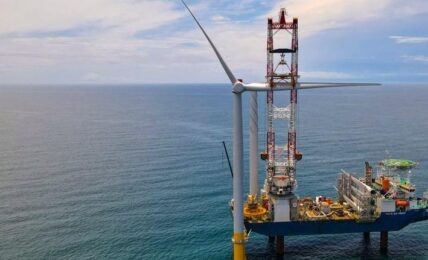Energy and automation digital solutions provider Schneider Electric announced today the launch of its new Building Decarbonization Calculator, designed to enable building owners and operators to quickly test and explore a range of energy and carbon conservation measures (ECCMs).
Buildings are a key source of global greenhouse gas (GHG) emissions, and also one of the hardest to replace, given their long-term nature. According to the European Commission, for example, buildings account for 40% of the energy consumed in the EU, and for 36% of energy-related GHG emissions. The new solution comes as building owners and operators face increasing pressure from regulators and other stakeholders to address the emissions impact of their assets.
Based on a dataset profiling close to 500,000 building performance models, the system recommends best practices and options for construction, energy efficiency, and decarbonization, as required by regulators, enabling buildings to comply with, for example, New York City’s Local Law 97, which beginning in 2025 will impose fines on buildings over 25,000 gross square feet that exceed emissions limits. Other US cities with decarbonization standards include Boston, San Francisco, and Austin, while the European Union will require all new buildings to be net-zero on carbon emissions by 2030.
The system also enables buildings to comply with standards such as CREEM (Carbon Risk Real Estate Monitor Global Pathways). In addition to compliance, it helps builders and managers make choices that will bring them the best ROI, Schneider Electric said.
Mike Kazmierczak, Global Vice President of Digital Energy for Schneider Electric, said:
“As regulatory requirements tighten, especially in cities like New York and Boston as well as in countries like France and the UK, the Building Decarbonization Calculator is a powerful consultative tool that supports compliance with local mandates, while providing a clear path for operational improvements. This innovative digital tool is designed to assist building owners and operators in reducing emissions, improving energy efficiency, and cutting operational costs, which will ultimately help owners accelerate action and increase the rate at which buildings are being retrofit.”
As an example of the efficacy of the system, Schneider cited a case study of a large office retrofit project in Boston that utilized the calculator to estimate $3.7 million in energy savings and $1 million in avoided fines over the next decade, achieving a seven-year return on investment. The analysis included modern building management systems, power monitoring software, LED upgrades, power factor correction, and the integration of photovoltaic systems with battery energy storage and microgrid technology, according to Schneider.
The company said that the system highlights the impact of selected ECCMs, assisting users in prioritizing their retrofit plans based on both carbon and financial metrics. This includes running preset scenarios for light interventions, medium retrofits, and deep renovations. scalable, allowing for tailored scenarios that reflect retrofit opportunities of individual buildings or entire portfolios, complete with support across retail, hotels, hospitals, and office buildings.
The calculator was built in collaboration with commercial real estate and investment management company JLL, and building carbon data analytics company C.scale, with JLL supporting the calculator by performing building performance modeling, and C.scale is working with Schneider Electric on machine-learning models to support climate action at speed and scale.


